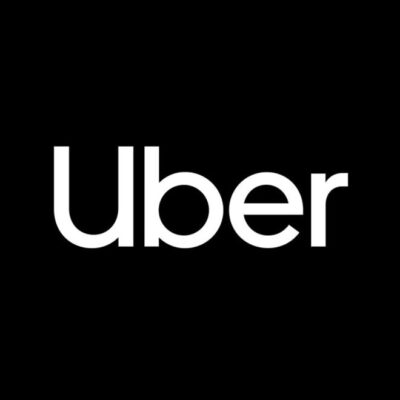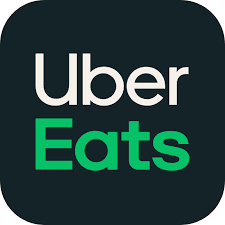The time has come for you to make money as a rideshare driver. However, given the limited amount of rideshare platforms and conflicting reviews, you might feel confused when trying to decide which one to join.
As you probably know, Uber and Lyft are the world’s most popular ridesharing apps. While they’re pretty similar overall, there are several noteworthy differences. To help guide your decision, this post dives into how they stack up.
Uber vs Lyft: Earning Potential
According to nationwide data, Uber drivers typically make more on average than Lyft drivers.
One reason why Uber drivers typically earn a bit more is that they tend to spend more time on the road. According to Gridwise, there’s a 4% difference in trips per hour between Uber and Lyft.
So if your goal is to maximize driving time, Uber may be the better way to go. That said, there are a lot of factors that affect how much you can earn on each platform, which we will explore next.
Key Factors That Influence Pay
Location
When it comes to pay, location is the most significant piece of the puzzle. According to Second Measure, Uber brings in the lion’s share of the U.S. rideshare market, generating 72% of spending. But in certain areas of the country, Lyft is way more popular.
As it turns out, riders are more likely to use Lyft on the West Coast or Midwest than in the Northeast. And in January 2021, Lyft took in 44% of rideshare sales in Phoenix and Detroit—its highest percentage among the 15 most populous U.S. cities.
With that in mind, make sure to pay attention to your local market instead of national averages. One easy way to do this is by downloading both companies’ customer-facing apps and reviewing how many drivers are circling in your area.
Commissions
Unfortunately, pricing spikes don’t always lead to stronger profits for drivers because both companies take in high commissions.
While Uber drivers typically generate higher hourly pay, the company takes 25% of the total fare. In comparison, Lyft only takes 20% of the total fare.
In reality, Uber and Lyft commissions are often much higher, in the 30% to 40% range, after factoring in extra charges like airport fees and safety fees.
The key lesson here is that it isn’t just about how much you earn with Uber and Lyft. It’s also about how much you keep. Both companies collect a fair amount of money from commissions at the expense of their drivers.
On top of that, Uber and Lyft drivers also have to fork over a significant amount of expenses in gas and car maintenance. And while there are some discount options available (more on that below), these costs still fall squarely on drivers.
There are also taxes to consider. As an Uber or Lyft driver, you work as an independent contractor. This means you have to pay the government a hefty chunk of whatever you bring in. This includes federal taxes, payroll taxes, and state taxes, depending on where you live.
🏆 Winner: Uber
With all of the above factors in mind, Uber’s 72% market share and higher hourly rate give it the earning potential edge for most drivers. So out of the two, I would pick Uber when considering total earnings averages.
Next, let’s take a look at how the platforms compare when it’s time to collect your dough.
Uber vs Lyft: Cashing Out
Both Uber and Lyft issue weekly payments by default, and it’s easy to link your checking account in both apps to receive payment. If you go with the weekly payment option, it won’t cost you anything to cash out. But you’ll have to wait at least a week for your money to land in your checking account.
Uber Instant Pay
To streamline payments, Uber has Instant Pay, which lets you cash out instantly up to five times per day. But there’s a catch. Uber charges $0.50 each time you use Instant Pay. If you cash out multiple times throughout a shift, you could lose up to $2.50 daily in fees. That being the case, you’re much better off using the service just once per day to avoid fees.
Uber Debit Card
As a workaround, Uber provides a free, exclusive debit card for drivers through a partnership with GoBank. If you sign up, you can cash out for free up to five times daily. You also get 1% cash back on all purchases, 3% cash back at Exxon and Mobil stations, 10% cash back at Advance Auto, and a 15% discount on select services at Jiffy Lube.
Lyft Express Pay
Lyft has a very similar payment system called Express Pay, which also charges a $0.50 fee for each transfer.
Lyft Direct Debit Card
To avoid that fee, you can apply for a Lyft Direct debit card and receive payments instantly after every ride without paying any fees.
Lyft Direct also issues cash back and savings rebates. You can earn 1% on gas and groceries, 2% back on gas at select locations, 4% back on dining, and 1% on a bonus rotating category every month. Plus, the card doesn’t have any low balance or maintenance fees.
🏆 Winner: Uber
As you can see, the cash-out process is almost identical for both two companies. But between the two, Uber takes the cake because its debit card currently offers 3% cash back at Exxon and Mobil, versus 2% for gas at select locations with Lyft. 1% might not seem like a big difference, but trust me, it adds up—especially if you live in an area where gas is expensive (e.g., New York or Los Angeles).
Using Uber and Lyft’s debit cards should be a no-brainer for serious drivers. The services don’t cost anything, and you can receive your money instantly. Sign up and thank me later.
Uber vs Lyft: Eligibility Requirements
Thanks to their user-friendly apps, Uber and Lyft make it super easy for new drivers to sign up. The application process is straightforward for both companies. It’s just a matter of providing your name and contact information and entering the city where you want to drive.
However, you will need to pass a couple of basic eligibility requirements to drive. These rules are intended to keep passengers, drivers, and the general public safe.
Uber Driver Eligibility Requirements
- Have a valid driver’s license, insurance, inspection, and registration
- Have at least one year of experience as a licensed driver or three years if you’re under 23 years old
- Meet your city’s minimum age requirements
- Demonstrate proof of residency
- Own a functioning smartphone
Uber Vehicle Requirements
- Must have at least four doors and transport a minimum of four passengers
- Must be 15 years old or newer
- The title cannot be salvaged, rebuilt, or reconstructed
- Rentals must come from an Uber-approved company
- Can’t have cosmetic damage, missing pieces, taxi paint jobs, or commercial branding
Lyft Driver Eligibility Requirements
- Be able to produce a valid driver’s license, insurance, inspection, and registration
- Meet your city’s minimum age requirements
- Demonstrate proof of residency
- Own a functioning smartphone
Lyft Vehicle Requirements
- No taxis or limousines
- Must meet local city or state standards
- Must have at least five seatbelts and a maximum of eight
- Vehicle must have 4 doors
- Rentals must go through the Express Drive program
- Accepts subcompact vehicles
Background Checks
If you want to drive for Uber or Lyft, you’ll have to pass a background check through Checkr, a third-party verification service. Most people should pass this with flying colors. But there are a few common disqualifying factors for Uber and Lyft that could make it difficult or impossible to secure work.
For example, you may be ineligible for Uber or Lyft if you’ve been convicted of a crime or if you’ve gotten a DUI. You may also be ineligible if you have a disqualifying theft or property damage offense in the last seven years. After passing the background check, you’ll also have to maintain a clean driving record to continue driving for both platforms.
🏆 Winner: Tie
As long as you have a clean record and a decent car, you shouldn’t have any trouble signing up for Uber or Lyft. Neither company will judge you on skill or experience—or even ask for any referrals for that matter. Taking a step back, working with rideshare companies (and in the gig economy in general), is much different than applying to a traditional job.
There are usually lower barriers to entry which make these gigs ideal for those looking for a side hustle or who are just starting out in their careers.
Uber vs Lyft: Navigation Maps
When driving for a rideshare service, the map you use means everything. It’s arguably the most important tool because your map is responsible for getting you from place to place as quickly as possible.
In light of this, let’s see how Uber and Lyft’s maps compare before you hit the road.
Uber Nav
Uber Nav is a built-in, proprietary GPS navigation system that pulls data from third-party GPS services such as Google Maps, TomTom, and Bing Maps.
It is solid overall and comes with some handy features like night mode and lane guidance. It’s not quite as advanced as Waze, but you can opt to use Waze or Google Maps if you prefer. To do this, simply select your default navigation app in settings.
The main issue with using a third-party map in the Uber app is that you have to toggle between the two programs. The last thing you want to be doing is fumbling around with your phone when you’re driving passengers.
Lyft Navigation
Lyft also has a default map, called Lyft Navigation, which runs on Google Maps. My favorite thing about Lyft Navigation is that it’s intuitive and easy to understand. For example, the app senses when your vehicle is in motion and changes to a simpler map format to minimize distractions.
To access additional features when driving, simply select “More” in the menu below the map. For example, you can report an emergency or view the details on your last ride.
Lyft Navigation also supports Waze. But just like with Uber, you’ll have to switch navigation preferences in the Lyft app.
🏆 Winner: Lyft
Lyft Navigation wins because it’s easier to use than Uber Nav and keeps things simple by pulling its GPS data from Google Maps. As a result, Lyft Navigation makes it a little easier to focus on the road, and you can’t put a price tag on that.
Uber vs Lyft: Ride Modes
The ride options you have on both platforms are numerous. Here’s a breakdown of each one.
Lyft Ride Modes
Lyft: Lyft is the standard driving option that can accommodate up to three riders at a time.
Wait & Save: Wait & Save lets customers order a ride and lock in a lower price during busy times. For drivers, the benefit is that you’ll know your schedule ahead of time. The downside is that you can potentially miss out on surge pricing.
Priority Pickup: Priority Pickup allows customers to request an expedited pickup. The service costs slightly more to customers, meaning more money for drivers.
Preferred: Lyft Preferred gives riders an upgraded experience, with nicer cars, more legroom, and top-rated drivers. As a driver, you can earn more with Preferred rides, but you’ll need to meet the following conditions:
- Your car must be the model year 2015 or newer.
- Your car must be impeccably clean.
- Your car must have more than 37 inches of legroom.
- You must have a driver rating of at least 4.9+ stars.
- You must have completed over 300 trips.
Lyft Lux: Lyft Lux is the company’s luxury top-tier ride service that has three different levels. Here is how to qualify as a driver:
- Lyft Lux: You must have a high-end sedan or SUV with four seats and a leather interior.
- Lux Black: You must have a luxury car with a black exterior, leather interior, and at least four seats.
- Lux Black XL: You must drive a luxury SUV with a black exterior, leather interior, and seating for up to six.
Uber Ride Modes
UberX: UberX is Uber’s standard, private rideshare option and the most common ride model that drivers encounter.
Uber Pool: Uber Pool lets customers share rides with other passengers. The benefit to passengers is that they can save a few bucks while drivers get longer trips and hopefully more tips.
Uber Comfort: Uber Comfort is an upgraded experience for customers, offering rides in newer cars with extra legroom. Drivers earn more money for each trip. Here’s how to qualify:
- You must complete at least 100 trips.
- You must have a driver rating of at least 4.85.
- Your car must be eligible and less than seven years old.
Uber Green: Uber Green provides rides in sustainable electric vehicles. If you drive an EV, you’ll likely automatically qualify for this drive mode. The main financial benefit to drivers is that you’ll earn an extra $0.50 for each trip.
Uber Black: Uber Black (and Uber Black SUV) is the closest thing that Uber offers to a traditional high-end livery or black car service. Drivers can earn significantly more money per trip, but it’s not easy making the cut. Here’s how to qualify:
- You must be insured to drive commercially.
- Meet all state- or local-level livery regulations.
- Maintain a driver rating of at least 4.85 stars.
- Drive a luxury car with leather seats.
UberXL: UberXL is the ride mode for groups of up to six people. Drivers earn more per trip and need to drive either a minivan or large SUV that seats at least five passengers.
Uber WAV: Uber WAV is available in select markets and provides rides to people that need to bring along their wheelchair or motorized scooter. Drivers must complete special training that focuses on helping passengers enter and exit their vehicles. Drivers are also expected to go the extra mile to assist passengers with walkers, canes, and other assistive devices.
🏆 Winner: Uber
As you can see, Uber offers a wider variety of ride options for drivers and, therefore, more earning opportunities. For this reason, Uber wins the ride mode category.
Uber vs Lyft: Which Company Has the Best Culture?
Most drivers are worried about dollars and cents, and rightfully so. However, it’s worth considering how the cultures of each company compare. You probably know that Uber has a long list of scandals under its belt, including sexual harassment and ethics claims. For example, Uber once infamously poached 50 employees from Carnegie Mellon’s robotics lab.
Lyft positions itself as a cooler alternative to Uber. Most notably, the company makes a point to be more welcoming and community-oriented than its rival.
🏆 Winner: Lyft
Lyft’s reputation is cleaner than Uber’s, and it has a more fun vibe to boot. Also, I’m all in for companies that take a stand and aren’t afraid to be outspoken about what they believe in. To be fair, Uber is trying to clean up its act. And if you dig beneath the surface, you’ll find dirt on both companies. The best advice I can give is to do your research and see which company aligns with your values.
Uber vs Lyft: Food Delivery
Uber and Lyft both make it easy to switch from driving passengers to making deliveries. Let’s take a closer look at how the services compare:
Lyft Delivery
Lyft Delivery partners with businesses that require local delivery services. Drivers can make money picking up deliveries and dropping them off for customers. With Lyft, you can deliver a variety of items including food, retail items, prescriptions, and auto parts.
Delivery requests appear like passenger ride requests in the app. It will say “delivery” as the ride type and give you the option of whether you want to accept it. In addition, you’ll see the total amount that you’ll earn for the delivery before you accept it.
The only downside is that Lyft Delivery is only available in major cities, including Austin, Atlanta, Texas, Houston, Indianapolis, Florida, Orlando, San Francisco, Phoenix, San Diego, San Antonio, and Seattle.
Uber Eats
Uber Eats is Uber’s food delivery service, available in over 500 locations throughout the U.S. Once you’re up and running, you can easily enable delivery requests in the Driver app menu.
It’s worth noting that Uber Eats recently acquired Postmates, so we can expect to see many more delivery options beyond food in the near future.
🏆 Winner: Uber Eats
Uber Eats is the better choice for food deliveries because it’s accessible to millions of additional drivers than Lyft Delivery. I also expect the earning opportunities with Uber Eats to grow due to its Postmates acquisition.
Uber vs Lyft: Driver Benefits
Rideshare services like Uber and Lyft don’t typically provide comprehensive benefits packages for drivers. But there are still some perks that you can access.
Here’s a look at how driver benefits measure up for both companies.
Lyft Bonus Opportunities
Lyft occasionally offers real-time bonuses in the Driver app, depending on rider demand.
Scheduled bonuses may also appear in the Driver app at the beginning of the week, helping you plan your driving schedule accordingly.
- Ride Streaks: Ride Streaks are multiple-ride bonuses that you can rack up by accepting back-to-back rides during busy times, such as weekday commute hours and holidays.
- Personal Power Zones: A Personal Power Zone is a type of single-ride bonus that may appear when there are more passengers than available drivers in a specific area. The map will display these zones when they are available.
- Earnings Guarantees: Earnings Guarantees allow you to collect a set amount of money for completing several rides in a set amount of time. Earn less than the guaranteed rate, and Lyft covers the difference.
- Ride Challenges: A Ride Challenge is a multiple-ride bonus for completing a set number of rides during a specific timeframe. For example, you might have to complete 10 rides between Monday and Friday to earn $25.
Uber Bonus Opportunities
Uber doesn’t contain as many in-app promotions as Lyft. But there are still a few that you can access from time to time.
- Quest: Quest lets you make extra money by completing a target amount of trips in a set period of time. For example, you might earn an extra $30 by completing 30 trips over a week.
- Consecutive Trips: Driving at busy times can also generate more rewards. With the Consecutive Trips plan, you can make extra money for completing a series of extra trips without canceling, going offline, or rejecting a trip.
Lyft Rewards
Lyft Rewards is a driver recognition program that provides kickbacks for superior service and dedication. Drivers get access to exclusive features and savings opportunities on things like car repairs, tax services, and roadside assistance.
Uber Pro
Uber Pro is a loyalty program for drivers and comes with benefits like discounts on fuel and car maintenance, priority pickups at airports, and roadside assistance.
In addition, qualifying Uber Pro drivers can receive 100% tuition coverage at Arizona State University (ASU) online. This benefit can also be transferred to an eligible family member. If you ask me, this is one of the coolest perks you can find in the gig economy.
🏆 Winner: Uber
If your primary goal is seeking added benefits through discounts and help with tuition coverage Uber is your winner. However, if you’re serious about taking online university courses, Uber’s ASU tuition coverage can far outweigh any money that you make by driving cars.
Uber vs. Lyft: And the Winner Is…
Uber is the winner by a nose or a bumper. When you’re ready to drive, I suggest trying out both apps so you can take the highest-paying rides that come your way.
Pay attention to local pricing trends to maximize your earnings. Once you have a better feel for each platform, you may choose just one to drive for, or you may prefer maximizing your income by working for both.
| Uber | Lyft | |
| Earning Potential | 🏆 | |
| Cashing Out | 🏆 | |
| Eligibility | 🏆 | 🏆 |
| Navigation Maps | 🏆 | |
| Ride Modes | 🏆 | |
| Company Culture | 🏆 | |
| Food Delivery | 🏆 | |
| Driver Benefits | 🏆 |
Frequently Asked Questions
Is driving as a side hustle worth it?
It largely depends on where and how much you’re driving. If you make this a full-time job, you will spend a lot of money on gas and on wear and tear.
After factoring that in, plus commission fees, you can quickly see why rideshare driving isn’t the most profitable or scalable side hustle. But it’s definitely legit, and it can be a fun way to earn some extra cash—and you can meet some incredible people along the way.
From my perspective, driving for Uber or Lyft is better as a part-time gig.
Does driving for Uber or Lyft affect your insurance coverage?
Yes. Your auto insurance will most likely increase when driving for Uber or Lyft. Talk to your insurance company to figure out a plan that fits your needs and budget. Remember: The more time you spend on the road, the greater the likelihood of getting into a fender bender or serious accident—especially in congested areas with a lot of traffic. That being the case, it pays to have adequate protection.
Does Uber use surge pricing?
Uber uses surge pricing at various times. In general, Uber costs more for prime-time service, during rush hour, or on weekends or holidays. The good news is that drivers can earn much more money during these times.
Does Lyft have a driver rating system?
Yes. Lyft always asks customers to rate the driver after a ride. If the customer doesn’t rate the driver, the app automatically issues a five-star rating.
Uber vs Lyft: Which Should You Drive For?
Rideshare driving for both Uber and Lyft is a proven way to bring in some extra dough, where and when you want. In my opinion, both companies are worth driving for as side hustles.
As one last piece of advice, it’s easy to go overboard comparing rideshare apps. By this point, you should be ready to pick a company and apply. You can always optimize your strategy later. And remember, there’s no rule that says you can’t work for both companies.
Whichever side hustle you choose, here’s to finding the one that helps you achieve your financial goals—and lets you have fun along the way!







No comments yet. Add your own